How will these resources help you?
Comparing earthquakes in different contexts enables geographers to consider the causes, impacts and responses of these hazard events, evaluating the importance of factors ranging from the geology of the area to human aspects such as relative affluence and preparedness. The 2010 Chile and 2015 Nepal earthquakes are ideal case studies for this kind of comparison, with very different physical locations and levels of development. These resources will enable teachers and older students to learn much more about these earthquakes than the summaries we often see in textbooks, allowing them to analyse and evaluate impacts and responses from an informed perspective.
How did Nepalis experience the 2015 earthquake?
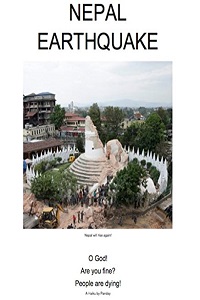
Nepal Earthquake: Great Earthquake in Nepal
by Ram Kumar Panday, published by Paradise Publication, (2015), 9789937299480
Published rapidly after the earthquake, this book was written by a well-informed indigenous geographer interested in relief work. Panday explains the background of the earthquake and then details the impact of the 2015 ‘quake in different areas, giving the reader a feel for the vast extent of this event. Panday’s consideration of the responses to the ‘quake also goes far beyond the summaries we are used to seeing, including impact on groundwater, figures for migration, damage to heritage and more. He doesn’t shy away from discussing crime and corruption and also explores problems experienced by the government in coordinating the relief effort. Those teaching or studying this famous example of an earthquake will benefit from reading this book.
How tourists experienced the 2015 earthquake
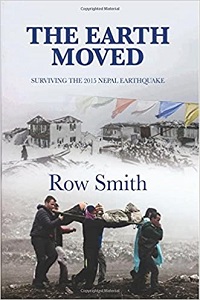
The Earth Moved: Surviving the 2015 Nepal Earthquake
by Row Smith, published by Story Terrace, (2016), 9781540868190
This account of the Nepal 2015 earthquake comes from two travellers who were trekking in Nepal at the time of the event. Row and Tom Smith were descending from the top of a Himalayan mountain when the earthquake struck, relying on their guide, Pasang, to lead them to safety in a village. Smith describes the destruction in the village and her response to it, painting a vivid picture. This is a much easier read than Panday’s account, but lacks the detail and isn’t written from a geographical perspective. The different approaches and contexts of the two books make them interesting companions.
What happened in the Chile 2010 earthquake?
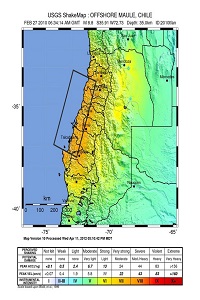
Maule, Chile Earthquake: Assessed through the lens of disaster, risk, and management
published by USC, (2021)
Storymaps are superb for presenting a range of audio-visual information to a viewer. Beginning with an overview of the event (including a useful video clip), this resource considers the primary and secondary impacts of the ‘quake, illustrating points with a range of maps and graphs. The section on disaster management will be of particular interest to A-level geography teachers and students. Analysis and evaluation are included in the commentary, modelling these skills for students. An interesting activity would be for students to explore this resource, then use the information from the previous books on Nepal to carry out a similar exercise, concluding with a comparison of the two earthquakes.
How Chile rebuilt so successfully after the 2010 earthquake
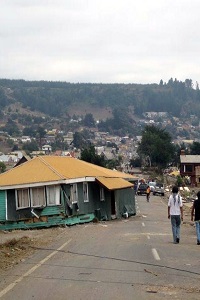
The rebuilding of Chile’s Constitución: how a ‘dead city’ was brought back to life
by Gideon Long, published by The Guardian, (2015)
Despite experiencing such a massive earthquake, Chile quickly rebuilt cities such as Constitución through private and public partnerships. The team gave themselves only 100 days to devise a plan, consulting with local people on controversial issues such as whether to rebuild homes in La Poza or turn the area into a forest, with homes built elsewhere. City residents were also asked which facilities should be prioritised for rebuilding. The architects in the team designed houses which could be built cheaply with public funding, with the capacity for expansion by future owners. Students could be challenged to summarise the strengths of this approach and consider whether these ideas would be transferable to the context of Nepal.
How Nepal is still trying to rebuild
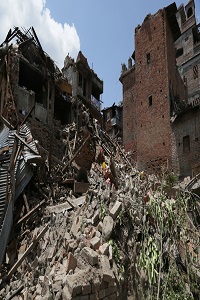
Nepal: First came the earthquake, then came the debt
by Stephen Starr, published by The Guardian, (2018)
This is a helpful article about the debts accumulated by Nepali people who took out loans to enable them to rebuild their homes after the 2015 ‘quake. Unfortunately, these loans often incurred high interest rates on repayments. Small government grants were available but were considered inadequate for the huge task for individuals to rebuild their homes. This scheme was discontinued in 2018. Students could be challenged to summarise the weaknesses in this approach and consider whether the approach in Constitución could be transferable to the context of Nepal.
Further materials
What Enabled Chile’s Remarkable Recovery from Disaster? by Alexandra Hamilton, published by The Regulatory Review, (2015)
Read this article
Nepal earthquake response: Creating lasting change for survivors, published by Oxfam International, (2023)
Visit this website
Catherine Owen is Head of Geography at The King Alfred School an Academy, a CGeog and a Geographical Association Consultant. She writes and presents for OUP, Hodder Geography, Tutor2U and more.
Text © Catherine Owen, 2022-2023
Text © Catherine Owen, 2022-2023



